-
 Bitcoin
Bitcoin $118400
0.47% -
 Ethereum
Ethereum $3836
2.20% -
 XRP
XRP $3.157
2.98% -
 Tether USDt
Tether USDt $0.9999
-0.03% -
 BNB
BNB $801.5
1.31% -
 Solana
Solana $180.9
2.07% -
 USDC
USDC $0.9999
-0.02% -
 Dogecoin
Dogecoin $0.2225
2.50% -
 TRON
TRON $0.3285
-1.02% -
 Cardano
Cardano $0.7789
2.60% -
 Hyperliquid
Hyperliquid $43.60
2.39% -
 Sui
Sui $3.892
4.41% -
 Stellar
Stellar $0.4229
3.34% -
 Chainlink
Chainlink $18.01
3.98% -
 Hedera
Hedera $0.2745
6.77% -
 Bitcoin Cash
Bitcoin Cash $582.3
3.38% -
 Avalanche
Avalanche $23.77
1.04% -
 Ethena USDe
Ethena USDe $1.001
0.01% -
 Toncoin
Toncoin $3.493
3.59% -
 Litecoin
Litecoin $110.0
2.48% -
 UNUS SED LEO
UNUS SED LEO $8.936
-0.37% -
 Shiba Inu
Shiba Inu $0.00001304
2.49% -
 Uniswap
Uniswap $9.999
1.09% -
 Polkadot
Polkadot $3.897
3.26% -
 Monero
Monero $308.6
-0.83% -
 Dai
Dai $0.9999
-0.01% -
 Bitget Token
Bitget Token $4.504
-0.04% -
 Pepe
Pepe $0.00001154
2.95% -
 Cronos
Cronos $0.1471
3.06% -
 Ethena
Ethena $0.6691
19.53%
How to operate when the Bollinger Bands narrow to an extreme and suddenly open?
When Bollinger Bands narrow to an extreme and suddenly expand, it signals a potential breakout — traders watch for volume-backed price moves beyond the bands for high-probability entries in volatile crypto markets.
Jul 29, 2025 at 06:49 pm
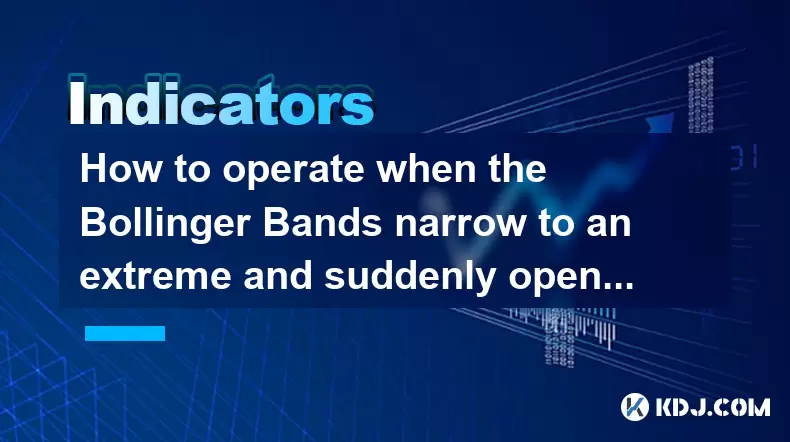
Understanding Bollinger Bands and Their Behavior
Bollinger Bands are a widely used technical analysis tool in the cryptocurrency trading space. They consist of three lines: a simple moving average (SMA), typically over 20 periods, and two standard deviation bands plotted above and below the SMA. These bands dynamically expand and contract based on market volatility. When the bands narrow to an extreme, it indicates a period of low volatility, often referred to as a "squeeze." This condition suggests that the market is consolidating and may be preparing for a sharp move. The moment the bands suddenly open or expand outward, it signals a spike in volatility, which often coincides with a breakout or breakdown in price.
Traders monitor this behavior closely because the transition from a squeeze to expansion can offer high-probability entry points. The narrowing of the bands reflects diminishing price fluctuations, and when the price breaches the upper or lower band after such a contraction, it may initiate a strong directional move. Understanding this dynamic is crucial, especially in highly volatile markets like cryptocurrencies, where price can shift dramatically in a short time.
Identifying the Squeeze and Expansion Phases
To effectively operate when Bollinger Bands narrow to an extreme and suddenly open, the first step is accurate identification of the squeeze phase. This occurs when the distance between the upper and lower bands reaches a multi-period minimum. Many traders use the Bandwidth indicator, which is calculated as (Upper Band - Lower Band) / Middle Band. When this value drops to a historical low, it confirms a squeeze.
Once the squeeze is identified, traders watch for a breakout candle that closes outside one of the bands. This breakout must be accompanied by increased volume or momentum to validate the move. In crypto markets, where 24/7 trading and news events can trigger sudden shifts, it's essential to use additional confirmation tools. For example, observing RSI divergence or a spike in trading volume on exchanges like Binance or Bybit can support the legitimacy of the breakout.
Entry Strategies After the Bands Open
When the Bollinger Bands suddenly expand after a prolonged squeeze, several entry strategies can be deployed depending on the trader’s style and risk tolerance.
- Confirm the direction of the breakout by checking whether the price closes above the upper band (bullish) or below the lower band (bearish).
- Wait for a retest of the now-broken band level. In many cases, the upper or lower band acts as support or resistance after the breakout.
- Enter a long position if the price retests and holds above the upper band (now support), or a short position if it retests and rejects below the lower band (now resistance).
- Use a stop-loss just beyond the opposite band or recent swing point to limit downside risk.
- Set a take-profit level based on the measured move principle — projecting the width of the squeeze from the breakout point.
For example, if the bands were compressed to a 50-pip range and then expanded with a breakout, a target of 50 pips from the breakout price may be reasonable. In Bitcoin or Ethereum trading, such moves can occur rapidly, so automated orders are recommended.
Using Confirmation Indicators
Relying solely on Bollinger Bands can lead to false signals, especially in choppy crypto markets. Therefore, integrating confirmation indicators enhances decision accuracy.
- Apply the Relative Strength Index (RSI): A breakout accompanied by RSI crossing above 70 (for bullish) or below 30 (for bearish) adds strength to the signal.
- Monitor volume spikes on platforms like TradingView or exchange APIs. A surge in volume during the band expansion confirms institutional or large trader participation.
- Use MACD to detect momentum shifts. A crossover in the MACD lines concurrent with the band expansion supports the trade direction.
- Consider candlestick patterns such as bullish engulfing or dark cloud cover near the breakout point for additional validation.
These tools help filter out fakeouts — common in low-liquidity altcoins — and increase the probability of a successful trade when the bands open.
Managing Risk During Volatility Expansion
The period immediately after Bollinger Bands expand is inherently risky due to heightened volatility. Proper risk management is non-negotiable.
- Never risk more than 1-2% of trading capital on a single squeeze breakout trade.
- Place stop-loss orders strategically. For long entries, set the stop below the breakout candle’s low or below the middle band if it’s acting as support.
- Avoid entering during major news events or scheduled announcements (e.g., Fed decisions, exchange outages), as these can distort technical patterns.
- Use trailing stops to lock in profits as the trend extends, especially in strong momentum moves common in crypto.
- Consider scaling out of positions — take partial profits at key Fibonacci levels or previous resistance zones.
In fast-moving markets like Solana or Dogecoin, slippage can impact execution. Therefore, trading on high-liquidity pairs and using limit orders instead of market orders is advisable.
Practical Example on a Crypto Chart
Imagine monitoring ETH/USDT on a 4-hour chart. Over several days, the Bollinger Bands compress tightly around the 20-period SMA, indicating a squeeze. The Bandwidth indicator hits a 3-month low. Suddenly, a large green candle forms, closing above the upper band, accompanied by a spike in volume on Binance.
- You wait for a retest: price pulls back and touches the upper band, now acting as support.
- RSI is above 70 but not yet overbought at 78, showing momentum remains.
- You enter a long position at $2,850 with a stop-loss at $2,790 (below the middle band).
- Your take-profit is set at $2,950, approximating the width of the prior squeeze.
- As price rises, you move your stop to breakeven once $2,900 is reached.
This structured approach leverages the full signal lifecycle — from squeeze identification to breakout execution and risk control.
Frequently Asked Questions
What timeframes are best for spotting Bollinger Band squeezes in crypto?
The 1-hour, 4-hour, and daily charts are most effective. Shorter timeframes like 5-minute charts generate too many false signals due to noise, while higher timeframes provide clearer, more reliable squeeze patterns.
Can Bollinger Bands be used in sideways markets?
Yes, but caution is required. In strong ranging markets, price oscillates between the bands without a breakout. Traders may use the bands for mean reversion strategies, buying near the lower band and selling near the upper band, but this contradicts the breakout approach during extreme squeezes.
How do I adjust Bollinger Band settings for crypto volatility?
The default 20-period SMA and 2 standard deviations work well for most cases. However, for highly volatile coins, increasing the standard deviation to 2.5 can reduce false breakouts. Always backtest changes on historical data before live trading.
Is it safe to trade Bollinger Band breakouts during low-volume periods?
Low-volume periods, such as weekends or holidays, increase the risk of whipsaws. It’s safer to avoid trading breakouts during these times unless confirmed by strong volume and external catalysts like project announcements.
Disclaimer:info@kdj.com
The information provided is not trading advice. kdj.com does not assume any responsibility for any investments made based on the information provided in this article. Cryptocurrencies are highly volatile and it is highly recommended that you invest with caution after thorough research!
If you believe that the content used on this website infringes your copyright, please contact us immediately (info@kdj.com) and we will delete it promptly.
- Pudgy Penguins Price Prediction: Buying Opportunity or Insider Dump?
- 2025-07-31 18:50:35
- Penny Coin Power: Unearthing 20x Potential in Undervalued Crypto
- 2025-07-31 20:10:14
- Shrapnel, GalaChain, and China Gaming: A New Frontier
- 2025-07-31 19:10:35
- Mutuum Finance, Bitcoin, and Market Analysis: Decoding the Latest Trends
- 2025-07-31 19:30:13
- Dogecoin Howl: Bullish Signals and Analyst Bites – Is the Meme Coin Ready to Pounce?
- 2025-07-31 18:30:16
- Decoding Crypto Presales, Ethereum's Role, and Navigating a Tricky Altcoin Season
- 2025-07-31 18:30:16
Related knowledge
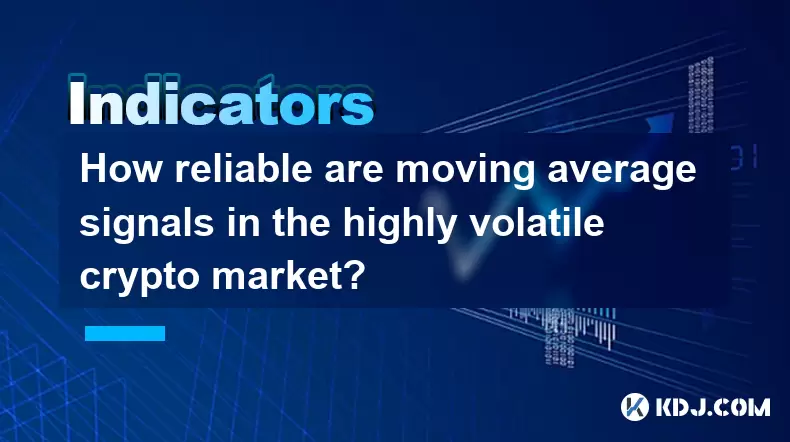
How reliable are moving average signals in the highly volatile crypto market?
Jul 31,2025 at 08:36pm
Understanding Moving Averages in Cryptocurrency TradingMoving averages (MAs) are among the most widely used technical indicators in the cryptocurrency...
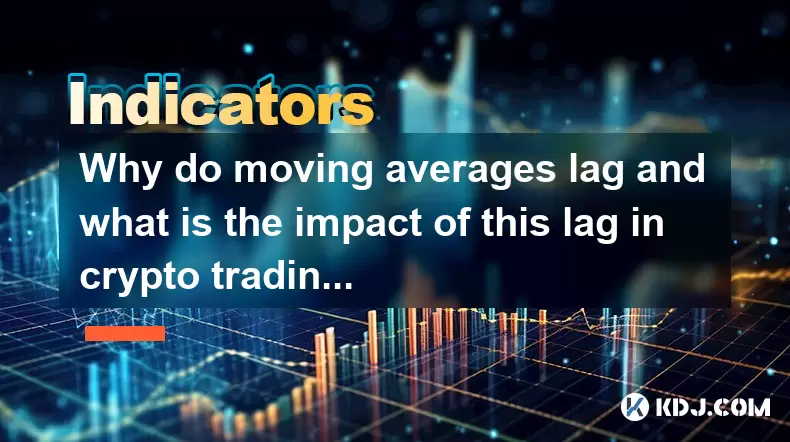
Why do moving averages lag and what is the impact of this lag in crypto trading?
Jul 31,2025 at 08:07pm
Understanding the Concept of Moving Averages in Crypto TradingMoving averages are among the most widely used technical indicators in cryptocurrency tr...
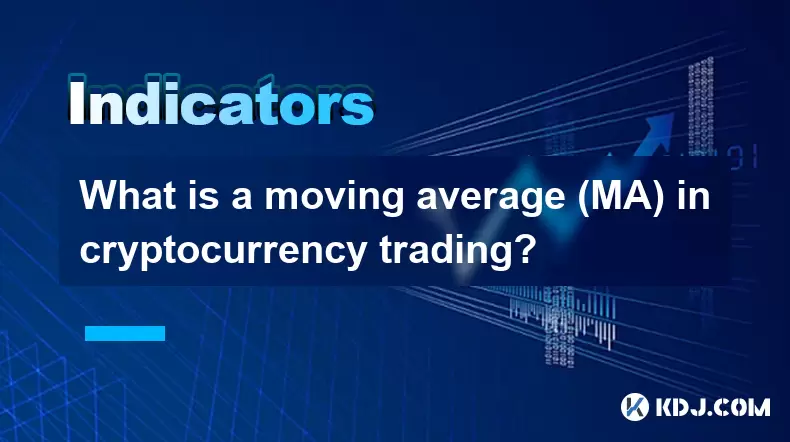
What is a moving average (MA) in cryptocurrency trading?
Jul 31,2025 at 06:30pm
Understanding the Concept of Moving Average (MA)A moving average (MA) is a widely used technical analysis tool in cryptocurrency trading that helps sm...
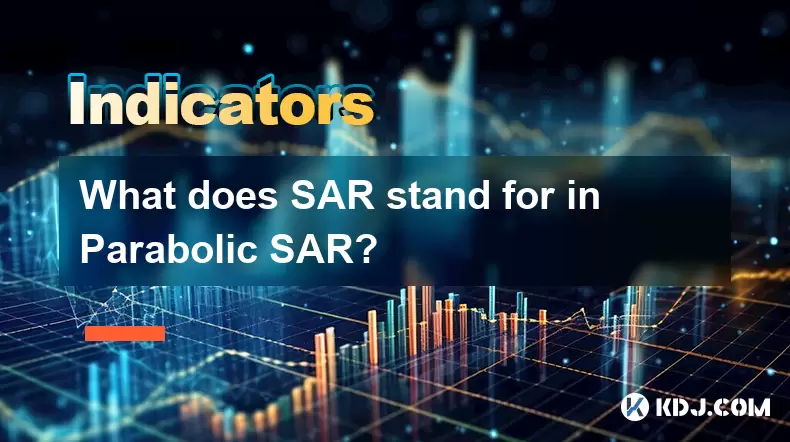
What does SAR stand for in Parabolic SAR?
Jul 31,2025 at 06:49pm
Understanding the Meaning of SAR in Parabolic SARIn the context of technical analysis in the cryptocurrency market, SAR stands for 'Stop and Reverse' ...
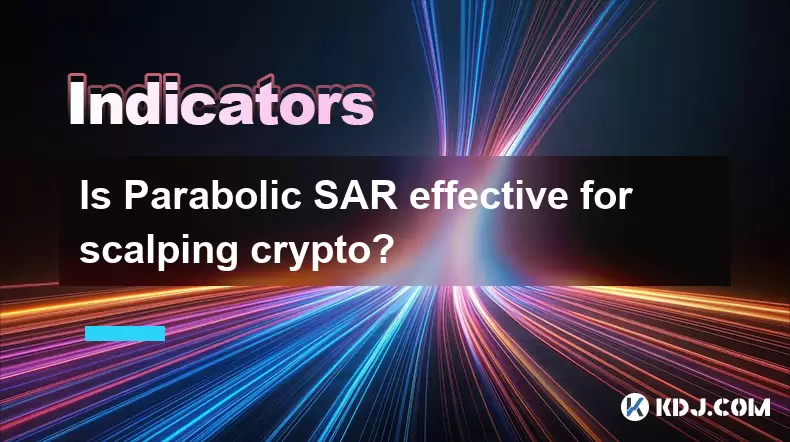
Is Parabolic SAR effective for scalping crypto?
Jul 31,2025 at 08:29pm
Understanding Parabolic SAR in Cryptocurrency TradingThe Parabolic SAR (Stop and Reverse) is a technical indicator developed by J. Welles Wilder, prim...
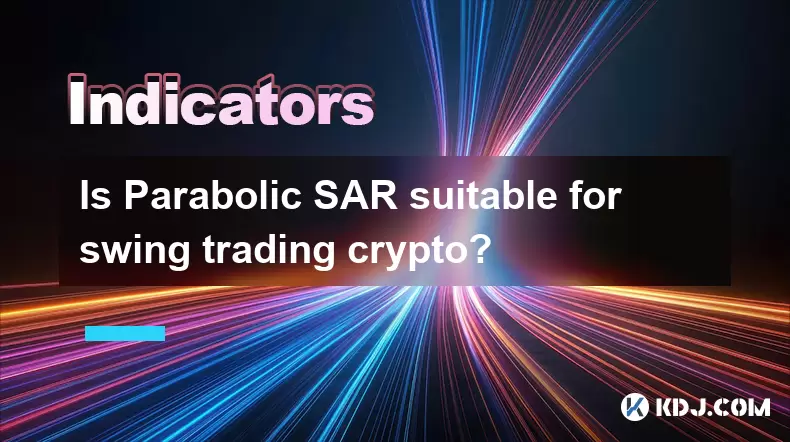
Is Parabolic SAR suitable for swing trading crypto?
Jul 31,2025 at 05:29pm
Understanding Parabolic SAR in Cryptocurrency TradingThe Parabolic SAR (Stop and Reverse) is a technical indicator developed by J. Welles Wilder that ...

How reliable are moving average signals in the highly volatile crypto market?
Jul 31,2025 at 08:36pm
Understanding Moving Averages in Cryptocurrency TradingMoving averages (MAs) are among the most widely used technical indicators in the cryptocurrency...

Why do moving averages lag and what is the impact of this lag in crypto trading?
Jul 31,2025 at 08:07pm
Understanding the Concept of Moving Averages in Crypto TradingMoving averages are among the most widely used technical indicators in cryptocurrency tr...

What is a moving average (MA) in cryptocurrency trading?
Jul 31,2025 at 06:30pm
Understanding the Concept of Moving Average (MA)A moving average (MA) is a widely used technical analysis tool in cryptocurrency trading that helps sm...

What does SAR stand for in Parabolic SAR?
Jul 31,2025 at 06:49pm
Understanding the Meaning of SAR in Parabolic SARIn the context of technical analysis in the cryptocurrency market, SAR stands for 'Stop and Reverse' ...

Is Parabolic SAR effective for scalping crypto?
Jul 31,2025 at 08:29pm
Understanding Parabolic SAR in Cryptocurrency TradingThe Parabolic SAR (Stop and Reverse) is a technical indicator developed by J. Welles Wilder, prim...

Is Parabolic SAR suitable for swing trading crypto?
Jul 31,2025 at 05:29pm
Understanding Parabolic SAR in Cryptocurrency TradingThe Parabolic SAR (Stop and Reverse) is a technical indicator developed by J. Welles Wilder that ...
See all articles

























































































